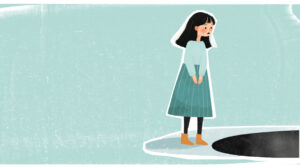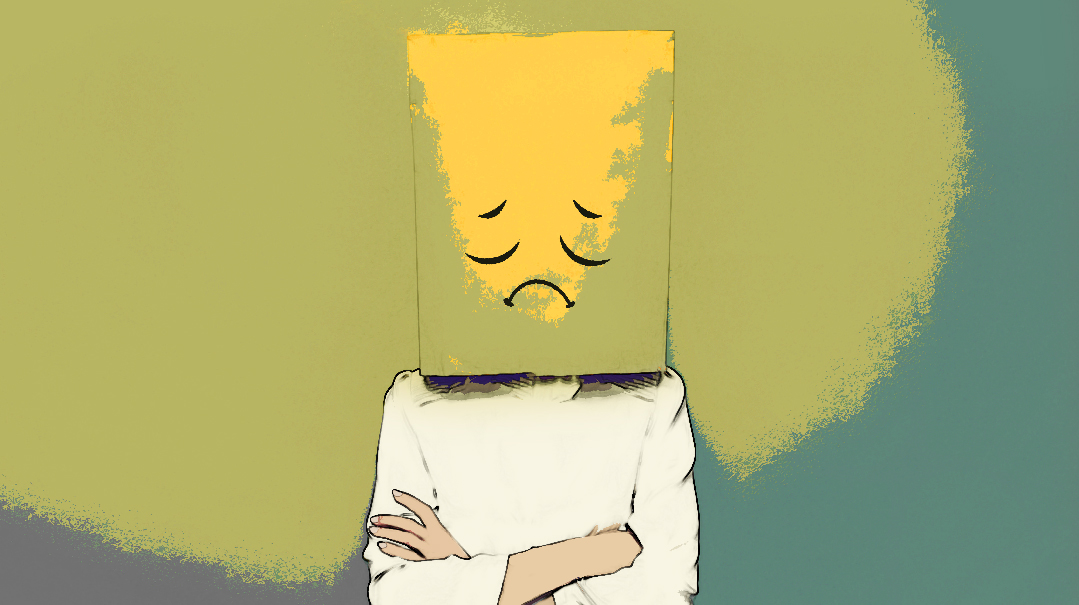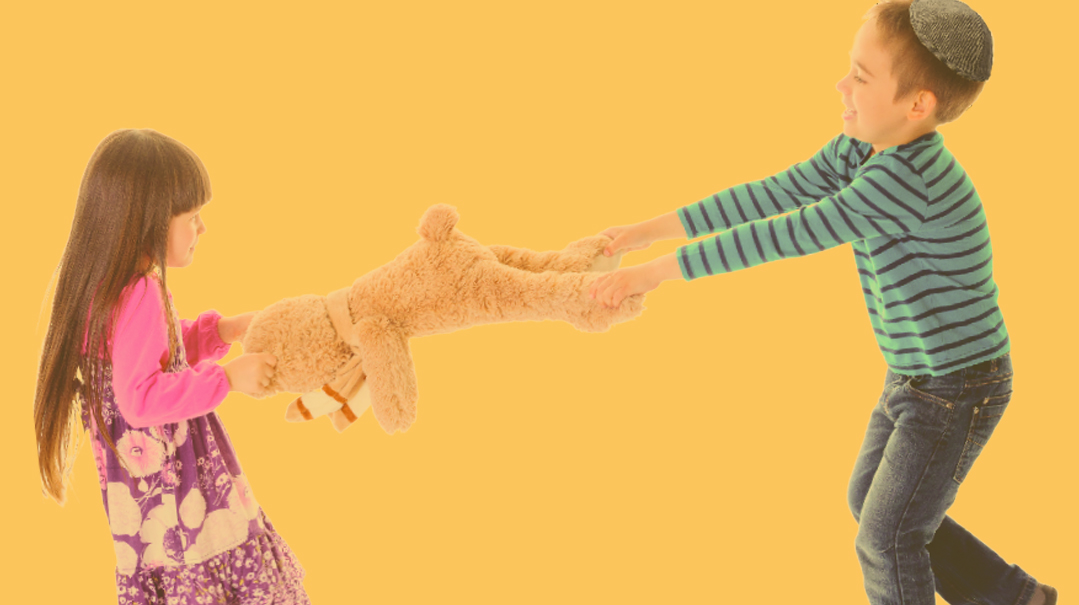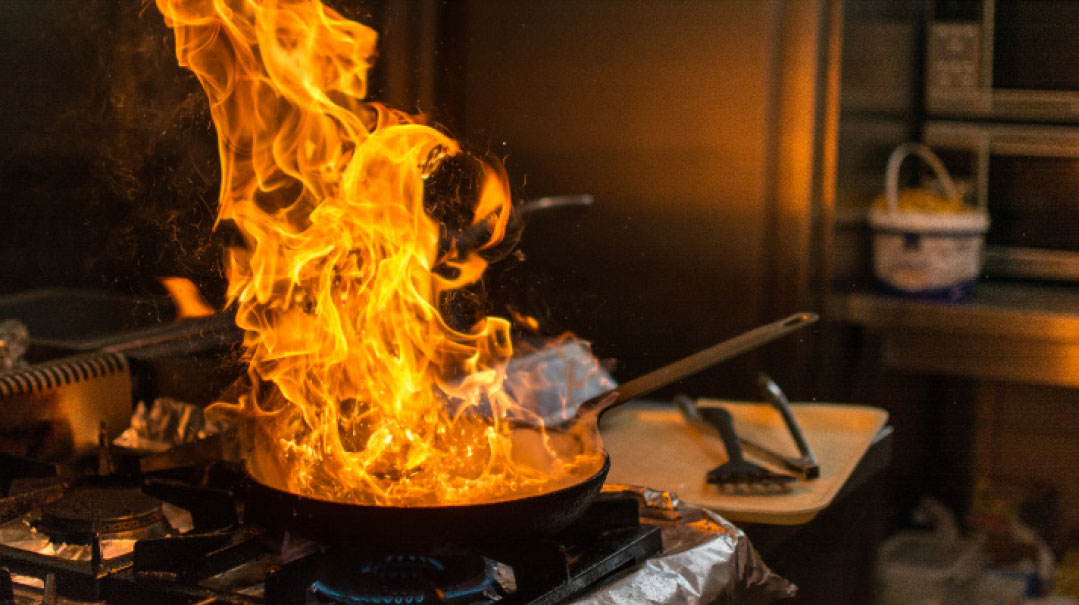Fear Ignited
| June 10, 2020Creating a safe space is the first step in healing trauma

The Problem: Single incident trauma causing anxiety and panic
Initial Tools Used: Psychoeducation on how the brain interprets trauma and stress-relieving strategies, including mindfulness.
Rikki was back. When I saw her number on my caller ID, I smiled, recalling her quick wit and exuberant personality. I’d had a total of four sessions with Rikki to help her process job dissatisfaction and assist her in finding a different career trajectory (Therapy Toolbox Issue 669). In the six months since I’d seen Rikki, I wondered how her new administrative position was working out. Did she need more support in the professional realm?
We set up an appointment for the following week.
“Hi, Abby!” Rikki warmly sang out.
“Welcome back, Rikki.”
Rikki settled back into the same side of the couch she always sat, and immediately started fiddling with the small throw pillow next to her.
“How’s it been going since I last saw you?” I asked.
“So, the administrative hours I was given at school are amazing. I’m totally loving it. It was a bit weird at first, transitioning out of my teaching role into a new one. And a bit awkward with some of my colleagues.
“But it’s been fine since the first few weeks, so that’s good. I’m enjoying my teaching hours more than I have in the past, although not as much as I’m loving the admin work. I hope I’ll prove myself to the principal this year and she’ll have more administrative options for me for next year.”
“I’m so happy for you that it’s working! So…” I smiled expectantly. “If your career is on the upswing, what brings you to the couch this time?
Rikki giggled. “I know. Is it weird I came back to you?”
“What do you mean?”
“Like, I came for one thing, and now I’m coming back for something totally different.”
“Not at all. I’m glad you felt comfortable enough to come back. That’s great.”
“Okay, phew,” Rikki said, mock wiping sweat from her brow. “So I’m here for something very different….”
“The suspense is killing me!” I laughed, but felt a more serious energy in the air and sobered up. “Take your time….”
“So, it’s really strange. Recently I, um, started to have some really severe reactions to stuff.”
“Want to tell me about it?”
“Like, it kinda came up out of the blue. But a few months ago, I had a small incident in the kitchen. A pot of oil caught fire. It was fine, except I’ve been having serious panic attacks since then.”
“Alright, can we back up a bit? Can you describe what happened with the fire?”
“I wouldn’t even call it a fire. It wasn’t so dramatic. I was making sweet potato fries, and I filled my pot with oil, got distracted, and then it caught fire.” Rikki’s face darkened.
“You seem a little nervous now. What are you feeling?”
“See, this is what I don’t get! I mention it and think about it and my heart starts to race and I feel like I’m going to vomit.”
“What don’t you understand?”
“It wasn’t that big of a deal! I’m so embarrassed that I’m reacting so extremely. Like, I even get nervous when I use that pot for anything else, and I haven’t attempted using a sweet potato since then. It was scary in the moment, but we were able to contain it, and just had some smoke on the backsplash. The only lingering thing was the horrible smell of burning oil.”
I nodded. “Something did happen,” I said. “A pot burst into flames. Your brain interpreted fire as danger, which it is, and you become fearful of fire. Does that sound crazy?”
“No.” Rikki paused. “But everything was okay in the end!”
“Yes, that’s true, but your brain didn’t get that message yet. It’s remaining in a locked, hypervigilant state of fear. And fear is healthy. It’s protective. But sometimes our brains and bodies think we need to be protected from danger that is no longer there.”
“Okay, that makes sense. So tell my brain to chill, and then I can get back to normal.”
I laughed. This was the Rikki I’d come to know: spunky, forthright, and impatient. “I wish I could just do that, but it’s a better idea to work through some things, namely understanding what is going on in your brain — then and now. As we talk it out, it’s likely that you’ll learn the tools to help your brain ‘chill,’ and then not only will you feel more in control of your emotions presently, you’ll gain understanding for the future.”
“Uch, there you go again, Abby. Always making me work.” Rikki laughed and rolled her eyes.
“I know, right? So frustrating that therapists aren’t magicians. So, how much do you remember from high school science?”
“Nothing. High school was a blur of GO. I only remember kodesh. But that’s probably because I’m a teacher now. Oh, and Pythagorean theory and a poem by Robert Frost.”
“Sounds eminently useful.”
“Oh, it is. Sometimes when I’m in the grocery store, I’ll just randomly break into ‘Two roads diverged in a yellow wood / And sorry I could not travel both…’ Rikki’s pretend-solemn face split suddenly by her large, warm grin.
“Rikki, you’re hilarious. Okay, so no memory from science, which means you don’t remember the parts of the brain. Ready to learn now?”
Rikki saluted in response.
Brain Basics
“Alright, so there are three main parts of the brain we’re going to discuss now: the thinking part, the feeling part, and the fear part.”
“There are only three parts of the brain?” Rikki inquired.
“No. There’s many more, and there are many parts within these parts, but we’re going to talk about them very loosely and simply.”
Rikki nodded and I continued. “The thinking part of the brain is responsible for rational thought, problem-solving, personality, planning, empathy, and awareness of ourselves and others. When this area of the brain is strong, we’re able to think clearly, make good decisions, and be aware of ourselves and others. It’s called the prefrontal cortex.” I attempted to draw a brain on my note pad and circled the prefrontal cortex, labeling it “PFC.”
“Alright.”
“Then there’s the feeling part of the brain. The limbic system, which is the emotion-regulation center, is located next to the prefrontal cortex, but is deeper inside the brain. This area is responsible, in part, for regulating emotion, and, ideally, has a close working relationship with the thinking center. When this region is strong, we’re able to manage difficult thoughts and emotions without being totally overwhelmed by them.” I circled an area and labeled it “limbic system.”
“Any questions?”
“Nope. Pretty clear so far.”
“Lastly, there’s the amygdala. It’s a tiny structure deep inside our brain, and serves as the fear center. This area is outside of our conscious awareness or control, and it’s primary job is to receive all incoming information — everything you see, hear, touch, smell, and taste — and answer one question: ‘Is this a threat?’ If it detects that danger is present, it produces the feeling of fear. When this area is activated, we feel afraid, reactive, and vigilant.” I drew a small circle.
“Want to rephrase what I just said?”
“Sure. There are three different parts of the brain — the thinking part, emotional part, and fearful part. Ideally the thinking and emotional parts work together to manage our thoughts and feelings, but fear can overwhelm that.”
“Excellent! You got it. It’s easier than you think to have our brains stuck in fear, because the emotion of fear is so flooding. It’s one of our more primal emotions, and the amygdala sends signals to the rest of our brain to respond to the fear stimulus through flight, fight, or freeze. It sometimes tells us to go numb, dissociate, or collapse. These experiences get encoded as ‘life or death’ and then get locked that way until the rest of the system gives the ‘all clear’ signal that we’re safe once again.”
“That sounds like a pretty smart safety system,” Rikki said. “If I was being chased by a bear, that is, but not because I just wanted to make some harmless sweet potato fries.”
“Right! Getting chased by a bear would put you into one of these survival states. But let’s address what’s actually going on. I’m going to challenge you here for a moment.
“You keep minimizing your experience and even mocking your reaction. But it wasn’t about the fries. Your brain doesn’t think it’s being chased by a giant sweet potato. There was a fire, and fire can be deadly.”
“Yes, that’s true.”
“Do you think you can allow yourself to accept that the fire — regardless of the outcome — turned on the emergency systems in your brain?”
“Yeah, I guess.” Rikki paused for several moments. “I suppose I’m just worried about how strongly I reacted. It’s scaring me.”
“That’s wonderful self-awareness. Can you identify what scares you? The feeling or the implication?”
“Both. I don’t like feeling out of control. I don’t ‘do’ out of control. Everything in my life is planned — I have daily schedules, weekly menus, it’s like my life is plotted on a spreadsheet.”
“That simple, huh?” I laughed. “I understand that no one likes to feel out of control. And it’s true some people manage uncertainty better than others.”
“I’m also scared this feeling is going to go on forever. I guess that’s what you meant by implication. I just don’t want my kids having this crazy-scared-of-a-sweet-potato mother.” Rikki stopped and smiled. “Okay, sorry, crazy-scared-of-fire-mother.”
“Good, you caught yourself. I hear that you’re worried about how your emotions may affect your children. However, can you try to remove the word ‘crazy’? There seems to be a lot of self-judgement. We’re at the end of our session, but your homework for next week is to try to integrate the neurobiological concepts and realities I taught you. Ideally, you can try to come to a place of loving acceptance, that yes, you’re fearful right now and your brain is in hypervigilant mode. And we’ll try to untangle the wiring and see what’s going on.”
“Okay, I’ll do my best. Do you think it really makes a difference if I’m accepting or not?”
“Well, let me ask you: Do you think something can heal in a hostile environment?”
“No. I suppose not. Okay, I’ll try for next week”
“Excellent. See you then.”
Creating a Safe Space
The following week, Rikki came in smiling. “I accept my plight!” she exclaimed as she pulled off her jacket. “Hi, by the way.”
“Hi, Rikki.” I answered, laughing, and let her get settled. “So, acceptance, huh?”
“Well, not fully. I just wanted to sound impressive upon entering. But in all seriousness, I did spend a lot of time thinking about it. I shared it with my husband, and he said it was super scary. I guess he helped to normalize the experience, and I became less judgmental of myself.”
“Excellent. How did this week go? With the fear?”
“It’s still really bad. But one time I was able to sort of talk myself into calming down and imagine it’s just the fear part of my brain.”
“Great! The psychoeducational understanding is really crucial for that reason. It’s important, though, to remember that having ‘intellectual’ expectations of the amygdala isn’t going to fix it at its core. It needs to feel that the situation is safe and stable to stop hijacking your brain.”
“How do we make it feel okay? That sounds weird, Abby. You’re talking like it’s a separate human entity that has understanding.”
“It’s not a separate entity in the least, but remember that this part of the pain is based on feeling. At the point where the amygdala is activated, it means that both the thinking and the emotional regulation centers are under-activated.”
“Can you explain that a bit more? Like what happens when those parts are under-activated?”
“It means the fear is heightened. When someone is traumatized, they may experience chronic stress, vigilance, fear, and irritation. They may also have a hard time feeling safe, calming down, or sleeping.”
“Yes! I’ve been having such a hard time sleeping at night! But I’m not even thinking about the fire. I thought it was just because I have a lot going on at work. You know, racing thoughts, planning, that type of thing. Does it make sense that it has something to do with my scare?”
“Absolutely. We don’t have ‘on/off’ switches. If our brains and bodies are being hypervigilant, that means we’re in constant flight/flight modes. That’s really hard on our bodies. It’s exhausting and draining.”
“Wow. Okay. So teaching my brain to chill. How’s that going to work?”
“Let’s go back to the question I asked you last session: Can something heal in a hostile environment? You answered no. That was in regard to your acceptance. But the same is true for actually healing the trauma.
“If the alarm bells are still ringing in your brain, it won’t calm down. We need to teach it that everything is safe. So, let me ask you: If you were being chased by a bear, would you stop to relax on the side of the trail with an iced coffee and some mindfulness practice?”
“Obviously not,” Rikki replied.
“You got it. So I’m going to teach you some strategies to first calm your nervous system down. Eventually, I’ll ask you to retell the fire story — describe the trauma of what happened in detail while employing these strategies, and your brain and body should get the memo that there’s no active threat.”
“Sounds like a plan. So what’s the first thing? You said something about mindfulness? I’ve read a bit about that.”
“Yes. I’ll get to that. But first we’re going to discuss the concept of ‘safe space.’ This is a place you can go to in your brain that has calming and safe associations. It’s a grounding space. When your fear is activated, then it’s possible to ‘escape’ to this calming place, and your brain signals to the rest of your body that it can calm down, as it’s achieved a level of safety. If you’re not sure of what to choose, think, ‘Would I rationally be able to think of this place, and stay calm if I was in real physical danger?’ Do any places come up for you?”
“Relaxing places? I like my room,” Rikki offered thoughtfully.
“Your room is good. However, did you ever have any moments of panic or experience feeling unsafe in your room?”
“Yeah. That first night I had a panic attack in my room, and even somehow imagined my room catching fire.”
“Okay, so we want to use something that’s completely untouched by your fire trauma. Any special place — real or imagined — you can think of?”
“When I was first married, my husband, and I went on a trip to Mauritius. It was literally a paradise. Silky white sand, the most unbelievable turquoise waters. At sunset, the entire ocean looked like sparkling diamonds. We had a private little house on the beach. It was probably the most relaxing time I have ever had. Oh man! Why did you remind me? Now all I want to do is escape to a tropical island!”
“Well, it certainly seems like that place — the scenery, the atmosphere — is a calm and nurturing space.”
Rikki nodded.
“Can you describe it to me? Every detail. How it looked, smelled, sounded? Anything to do with your five senses. By creating this ‘safe space’ narrative, you’re starting to cement it in your brain.”
Rikki snuggled back in the couch, with a small smile on her face and a faraway look. For the rest of the session, Rikki described in intricate detail everything about her favorite spot on her private, sandy beach. The idea behind was to reengage each one of her senses in the recreation of a safe, calm space.
“Rikki, that was excellent,” I said at the end of her description. “Your homework this week is imagine this safe space as frequently as possible — but only when you are in a calm and relaxed state. We need to install it in your psyche first, so whenever you’re feeling good, or even neutral, you can imagine your beach in as much detail as possible, even if it’s just for several seconds.”
“Okay! Will do. Can I prepare an iced coffee for my beach vacation, too?” Rikki chirped as she opened the door.
“Sure thing,” I told her.
Dialing Down Stress
The following week Rikki came in looking pensive.
“Hi, Rikki. How was your week?” I inquired
“It was okay, I guess. I tried to spend time on my beach, but honestly I was pretty nervous a lot of the time, and you said not to go there if I was stressed so as not to create a negative association.”
“Yes. That’s very important. I’m sorry you had a difficult week. In our work together, I hope to be able to help you isolate the core of your fear and trauma. But because we can’t necessarily find and treat the root of trauma in a couple of sessions, let’s spend some time working on some strategies to combat these symptoms. That way, the weeks in between sessions, as we try to get to the core, can be a little more manageable and less stressful.”
“Okay. Sounds good.”
“I encourage you to continue to call on your beach — your safe space — whenever you’re feeling calm. And let’s see what tools you already have to deal with your difficult emotions. What do you usually do when you’re feeling stressed?”
“Drink coffee. A lot of it,” Rikki answered swiftly. “Delicious hot coffee with like three tablespoons of sugar and milk.”
“Okay, so when you feel stressed, you hype yourself up on caffeine and sugar?”
“Yes. And don’t ask me not to, because that’s basically a prison sentence for a mother with five kids under eight.”
“Alright, so chamomile tea is off the table. Although that’s actually a good choice that can be soothing; you can try it after your coffee. What else?”
“I like to exercise. To go running or an aerobics class or something like that.”
“That’s a really good one. Exercise can flood your body with endorphins. Those are happy hormones, which can help you relax and boost your mood. When you’re feeling panicked, could you go exercise?”
“Depends. I suppose I can even just do an impromptu dance party. I do a lot of those, much to the embarrassment of my older kids. Sometimes I take a walk after dinner if, miraculously, the kids follow routine and the war zone that’s my kitchen is under control. No early morning exercise for me. Waking up before it’s absolutely necessary? Almost as bad as asking me to stop drinking coffee.”
“Got it. So, exercise is great, and whether or not you want to heed the advice, limiting caffeine, eating healthy foods, and ensuring you have a proper sleep at night are all effective strategies to manage anxiety, stress, and panic. Rikki, have you ever heard of mindfulness practice?”
“I think so. It’s like mediating or something? I’m not really good at staying still. I get bored easily.”
“I know it might be our natural inclination to always be on the move, but mindfulness is essentially the idea that we can find calm and focus in the present. When we spin out into the future, worrying and wondering, that’s perfect breeding ground for anxiety and panic. There are several different exercises we can try to start. You open to hearing them?”
“I guess… I really don’t like sitting and doing nothing. But I’ll try.”
“Alright. There are different types of mindfulness exercises. Some go ‘into your body,’ helping you to just sit with yourself and experience the sensations of feeling, movement, and breath. Other exercises focus outward, looking around, noticing things in a different way.
“Sometimes, when you’re actively in an anxious state, it’s easier to go outward than inward. We can try one exercise that’s kind of a blend. It’s a really well-known, super simple one to start.”
“Sure. I’m game.” Rikki began looking around expectantly. “What are we minding?”
“Choose.” I pointed to the small row of water bottles on my desk and to the candy bowl brimming with multi-colored foiled goodies. “Drink or candy?”
“Candy. Obviously.” Rikki reached for a pink chewy taffy and started unwrapping it.
“Wait! Just hold it in your hand for now. This experiment was originally done using a raisin. First, pretend this is the first time you’re seeing this candy. How does it feel? What does it sound like? How about when you unwrap the foil? Do it slowly. Pay attention to the crackle. Please describe what you see.”
I watched Rikki carefully unwrap the candy, fingering the shiny fuchsia paper and the small white wax paper underneath.
“It’s edges are sharp. The color is bright. It draws my attention. It crinkles a bit and is stuck at one end. I have to pull some foil off the taffy. It smells too sweet and artificial. Smells… pink? Feels hard… Hey! When are these from?”
“Just bought them, but stay in the moment, Rikki. You’re doing great. You can eat it now.”
Rikki made a brachah, put the candy in her mouth, and started chewing slowly. I could tell she was concentrating. Once she’d swallowed a bit, Rikki looked up. “It tastes like strawberry. It’s chewy, and is getting stuck in my teeth. It feels like a hard gum at first, and then I need to swallow it. It’s yum.”
“Excellent, Rikki! You just ate a small candy — and achieved true mindfulness — for four minutes! That’s exactly the purpose — to take yourself out of any projections or anxiety and focus on the present. You can do that with eating, drinking, or looking around. If you find yourself getting nervous, and don’t want to eat or drink, just look around, even out the window, and observe what you see without judgement. Just mentally state what’s going on. How do you feel?”
“I actually liked that exercise. I could maybe do this with my morning coffee or something. I like the window idea, too.”
“Great! So you have some strategies until we see each other next. Our plan going forward is to understand how memory is created, learn a bit about emotional encoding, and then actually treat the core of this fire trauma.”
“Sounds like a plan. And in the meantime…” Rikki grabbed a few candies with a lopsided grin. “I’ll be really diligent about my candy homework. I may even need to do some mindful babka practice. Oh! Mindful coffee and babka practice sounds like a really good idea.” Rikki’s excitement as she prepared to leave was endearing.
“Yes, I give my stamp of approval,” I said with a laugh.
“At least I’m feeling more hopeful. I’m a little nervous to get into the trauma, but for now I’m feeling lighter.” Rikki looked down at her fistful of candies, and giggled as she headed out the door with a wave.
Rikki’s trauma treatment will continue in the next Therapy Toolbox installment.
Abby Delouya maintains a private practice in Montreal and works in schools as a youth and addictions counselor.
This article is for psycho-educational purposes only, not diagnostic purposes, and does not serve as a replacement for individual therapy. Situations are a composite of people and situations and all identifying details have been changed.
(Originally featured in Family First, Issue 696)
Oops! We could not locate your form.











